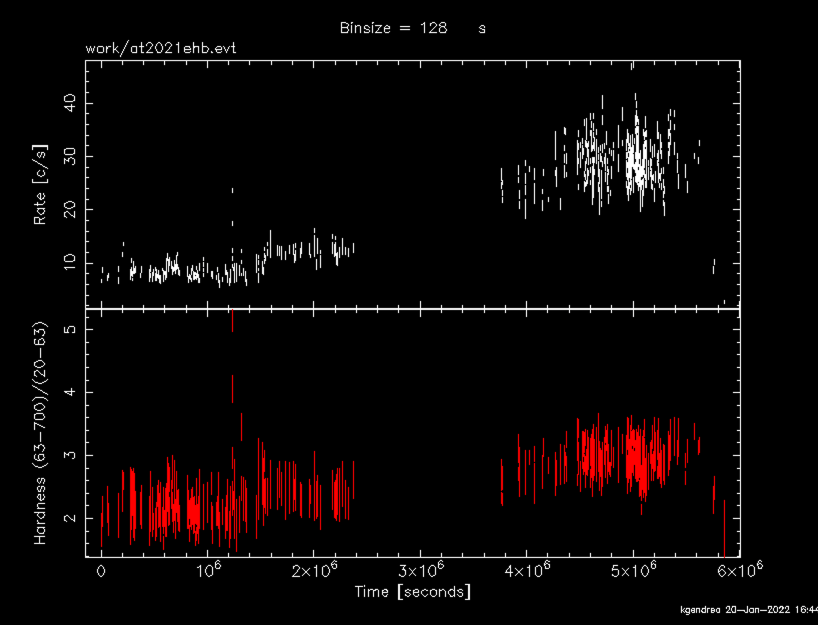NICER / ISS Science Nugget
for January 20, 2022
Last Gasp of an Unfortunate Star?
Black holes millions of times the mass of our Sun are believed to reside in the cores of most galaxies. Occasionally, a star will wander too close and be torn apart by one of these lurking monsters, in a phenomenon detectable by our visible-light, ultraviolet, and X-ray telescopes known as a tidal disruption event (TDE). A subset of TDEs emit particles and radiation in the form of jets that are also visible to radio telescopes.
Initially discovered in ground-based optical surveys of the sky in March 2021, a brightening transient named AT2021ehb was detected by NASA's Swift telescope in X-rays in July and identified by its broadband spectral properties as a likely TDE in a relatively nearby galaxy. Further monitoring indicated a "hardening" -- an increase in the brightness of high-energy X-rays relative to low-energy X-rays -- of AT2021ehb's emission with time. Such hardening is often accompanied by supporting evidence for jet emission, but no radio emission from AT2021ehb was seen. At this point (Nov 2021) NICER observations were requested by a team from Caltech. An intensive campaign of NICER observations over the past two months, in coordination with NASA's NuSTAR hard X-ray telescope, have shown significant short-term variability on top of a steady rise in both brightness and hardness (see accompanying figure), but in the last few days the X-ray flux from AT2021ehb has, without apparent warning, plummeted to a fraction of its peak and the lowest point seen yet by NICER. This may indicate the sudden depletion of matter falling into the black hole, which in turn suggests that we are now seeing the last wisps of the unfortunate wandering star being consumed.

Figure: NICER's two-month (12 Nov 2021 through 20 Jan 2022) view of the likely tidal-disruption event AT2021ehb. X-ray counting rate, integrated over photon energies and averaged within bins of 128 seconds duration, is shown in the upper panel. The lower panel shows the evolution of "hardness ratio," a shorthand summary of the spectroscopic content of the detected X-rays: the ratio of photon counts in the 0.63-7.0 keV energy band to those in the 0.2-0.63 keV band.
<< Previous
Main Index
Next >>